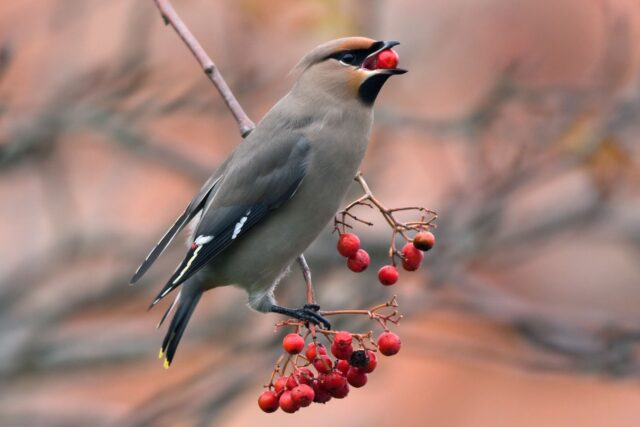Large numbers of rare and beautiful Waxwings are heading towards the UK in what could be the first major arrival for a decade, say researchers from the British Trust for Ornithology (BTO).
These pinkish, Starling-sized birds have swooping crests, orange, grey and lemon-yellow tails, and wing feathers with waxy red tips.
They breed in coniferous forests from Scandinavia to eastern Russia and usually spend the winter further south.
This year, there are signs of a poor crop of berries in Sweden and Finland. Without this vital resource, Waxwings have to move further afield, reaching the UK and other western European countries as they search for food. The last time this happened was in 2015/16, but we haven’t had a good ‘Waxwing winter’ since 2012/13. Waxwings have been recorded moving west from their usual wintering range in recent days and the first bird arrived in the UK, on the island of Unst, late last week.
Their preference for red berries often brings Waxwings into close proximity with humans. As well as Rowan and Hawthorn, the berries of shrubs and bushes often planted in urban areas also provide important sources of food. Gardens, industrial estates and supermarket car parks can all host spectacular gatherings of Waxwings, with up to 300 in large flocks, so are worth checking as more of these amazing birds arrive. Anyone lucky enough to spot a Waxwing in their garden can help researchers keep track of them by taking part in the BTO Garden BirdWatch survey. Visit www.bto.org/gbw to find out more.
Rob Jaques, BTO Garden BirdWatch Supporter Development Officer, says: ‘A real Waxwing winter, when many hundreds of these birds visit our shores, is a rare occurrence, so it’s exciting news that so many of these snazzy visitors are on their way to us right now. Keep an eye on your garden, particularly if you’ve got a Rowan tree or a Cotoneaster, Pyracantha or Viburnum plant covered in red berries. If you do get lucky, let us know by taking part in the BTO GardenBirdwatch survey.’




